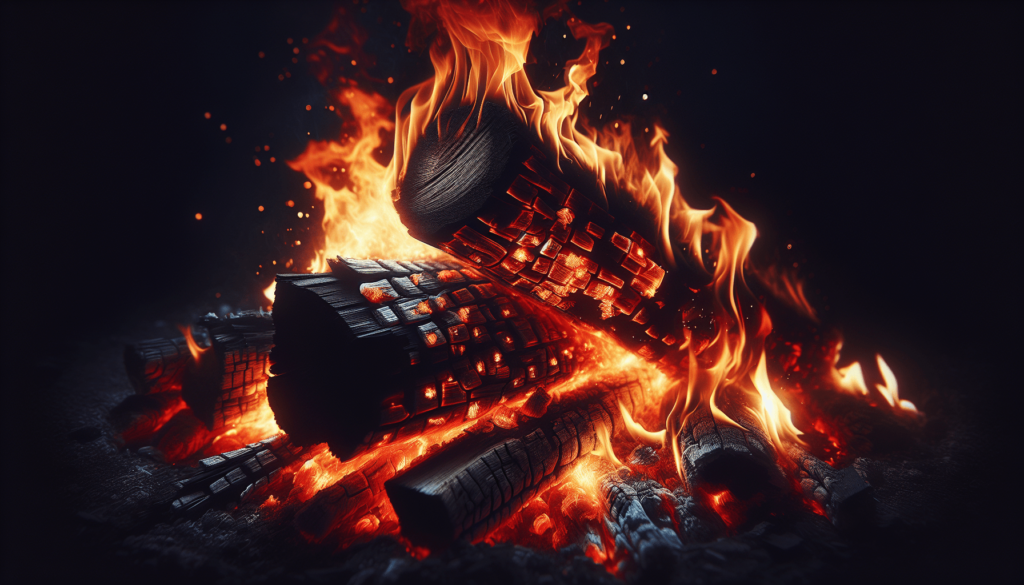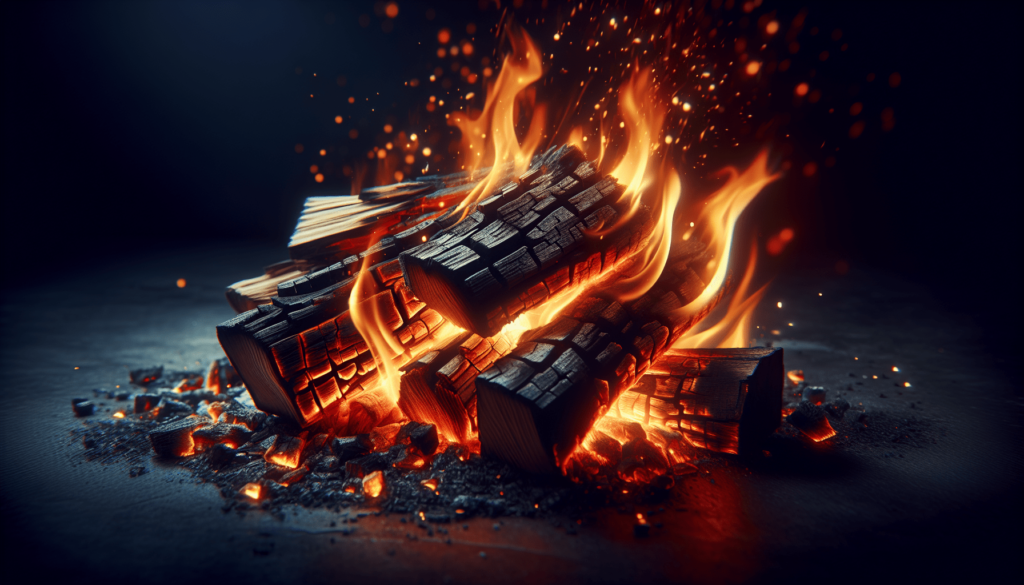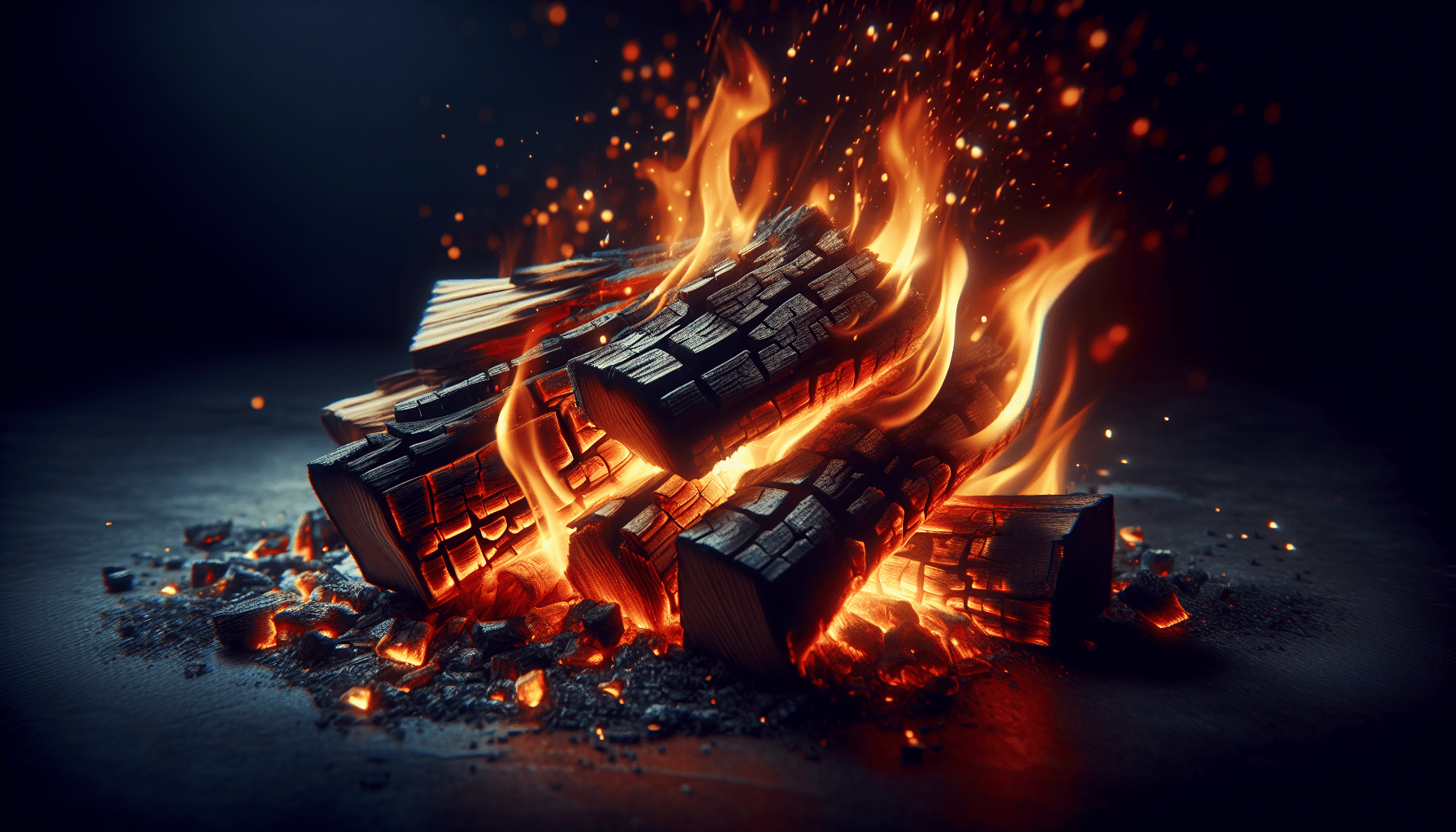When I think about the term “burning wood,” it conjures up images of cozy campfires, crackling fireplaces, and the warm glow of a stove on a cold winter’s night. The act of burning wood, scientifically known as combustion, is a fascinating process that transforms solid wood into heat, light, and ash. In this article, I’ll dive into the mechanics of combustion, explore its history, and discuss the environmental impacts, making sense of what burning wood really entails. Have you ever sat by a crackling fire on a cool night, mesmerized by the dance of the flames and wondered, “What is burning wood called?” I have, and it’s one of those questions that reveals the layers of science, tradition, and even a bit of magic behind something seemingly simple.
The Basic Term: Combustion
When you ask, “What is burning wood called?” the straightforward answer is combustion. Combustion is the chemical process where substances, in this case, wood, combine with oxygen to produce heat and light. Simple enough, right? Well, there’s a lot more going on behind the scenes.
The process breaks down into a few critical stages:
| Stage | Description |
|---|---|
| Ignition | The initial phase where heat is applied to the wood, causing it to reach its ignition temperature. |
| Pyrolysis | The wood begins to break down chemically due to the heat, releasing various volatile gases. |
| Flaming | These gases ignite and burn, producing the bright flames we all recognize. |
| Smoldering | After the volatile gases have burned off, the remaining charcoal continues to glow and produce heat until it eventually turns to ash. |
Understanding combustion might make you the life of the party at your next bonfire. Or, at the very least, you’ll impress your friends with your newfound knowledge.
Pyrolysis: The Unsung Hero
It’s not just a fancy word to toss around at the next trivia night; pyrolysis is essential to the entire process of burning wood. When wood is heated, it undergoes pyrolysis, breaking down into smaller molecules. This releases gases like methane, carbon monoxide, and hydrogen.
These gases mix with the oxygen in the air and ignite, finally creating that mesmerizing flame. Pyrolysis essentially sets the stage for the fireworks, ensuring you get that beautiful, warm glow.
How Pyrolysis Works
Think of pyrolysis as the preparatory phase for the main act. During this stage, the heat applied to the wood doesn’t immediately ignite it but causes it to decompose. Here’s how:
- Water Evaporation: Initially, the heat drives out the water content in the wood.
- Chemical Decomposition: The cell walls and complex molecules start breaking down into smaller ones.
- Gas Release: These small molecules form gases that are flammable and mix with oxygen to create flames.
It’s like a tiny chemical symphony happening in your fireplace. Who knew the simple act of burning wood was such an intricate process?

The Role of Oxygen
It’s often overlooked, but oxygen plays the role of the critical third wheel in this fiery relationship. Without oxygen, there’s no fire. Simple as that. When wood burns, it’s not just the wood that’s doing the work; oxygen is giving it a little help.
The Interaction
When you light a match, the heat decomposes the cellulose in the wood into volatile gases. These gases then mix with oxygen, creating a flame. Here’s a simplified way to think about it:
| Element | Role |
|---|---|
| Wood | Provides fuel |
| Heat Source | Initiates the process |
| Oxygen | Sustains combustion |
By combining these elements, they produce the familiar and cozy spectacle of a wood fire.
Types of Wood and Their Burns
Believe it or not, not all wood burns the same. Hardwoods and softwoods behave differently when they’re set aflame.
Hardwoods
Hardwoods like oak, maple, and hickory are dense and produce a longer-lasting, hotter flame. They’re ideal for fireplaces and wood stoves where you want sustained heat and a longer burn time.
Softwoods
Softwoods like pine and spruce ignite quicker but burn faster. They’re excellent for kindling and getting a fire started but not as ideal for long-term heating.
Here’s a comparative look at how different types of wood burn:
| Type of Wood | Ignition Time | Burn Duration | Heat Output | Smell |
|---|---|---|---|---|
| Oak | Slow | Long | High | Mild, sweet |
| Pine | Quick | Short | Low | Strong, resinous |
| Maple | Moderate | Long | High | Mild |
| Spruce | Quick | Short | Low | Earthy |
So the next time you’re picking out wood for your fire, keep these characteristics in mind to enhance your burning experience.

Phases of Wood Combustion
We’ve briefly touched upon the phases, but let’s delve deeper. Understanding each phase gives you a clearer picture of what’s happening.
Ignition
This is where the magic starts. A match strikes, creating a small, localized heat. The wood starts to heat up, reaching its ignition temperature (typically around 300°C or 572°F for wood) and begins to combust.
Flaming Combustion
This is the exciting part: the flames. This stage creates the bright, flickering light we associate with fire. The gases released during pyrolysis mix with oxygen and combust, producing flames.
Smoldering Combustion
Eventually, the flames die down, but the wood isn’t done burning. Smoldering combustion is when the remaining charcoal continues to oxidize slowly, producing a glowing coal bed. This phase can last for hours, providing sustained heat.
Extinguishment
Finally, the process winds down. The fuel is spent, the heat dissipates, and the fire goes out, leaving behind ash. The remnants of what was once crackling wood are now fine particles that you’ll have to sweep away the next day.
Why Does Wood Crackle?
Ah, the crackling sound. It’s the serenade of a wood fire. But why does it happen? When the wood burns, the heat causes the more volatile liquids trapped inside it to vaporize. This rapid change from liquid to gas builds pressure inside the wood cells, eventually causing them to burst. This release creates that signature crackling sound.
Safety First: The Importance of Proper Ventilation
Burning wood isn’t just about the fire; it’s about doing it safely. Proper ventilation is crucial. The combustion process produces carbon monoxide, a dangerous gas. Without adequate ventilation, this gas can accumulate indoors, leading to serious health risks.
Tips for Proper Ventilation
- Use a Fireplace or Wood Stove: These are designed for safe wood burning.
- Invest in a Good Chimney: Ensure your chimney is clean and functional. Soot and creosote can build up over time, leading to blockages.
- Install Carbon Monoxide Detectors: These can alert you to dangerous levels of carbon monoxide in your home.
- Open a Window: Allowing a little extra airflow can often make a significant difference.
The Environmental Impact
Burning wood has been a way to provide heat for centuries, but, like all things, it comes with its environmental consequences.
Carbon Footprint
Wood is considered a renewable resource, but burning it produces carbon dioxide, a greenhouse gas. The impact can vary depending on factors like the type of wood and the efficiency of the burn.
Pollution
Wood burning can also produce particulate matter, which can affect air quality. This is why many places have regulations on wood stoves and fireplaces to minimize their impact on the environment.
Sustainable Practices
To burn wood responsibly, consider the following:
- Use Seasoned Wood: This has lower moisture content and burns more efficiently, producing less smoke and emissions.
- Follow Local Regulations: Some areas have guidelines and restrictions to minimize air pollution.
- Invest in a High-Efficiency Wood Stove: These are designed to maximize heat output and minimize emissions.
Cultural Significance of Wood Burning
From ancient rituals to cozy family gatherings, burning wood is steeped in cultural significance.
Historical Context
Long before the advent of modern heating systems, early humans relied on wood fires for warmth, cooking, and protection. Fire was central to daily life and even had spiritual significance in many cultures.
Modern-Day Traditions
Even today, the act of gathering around a fire has social and cultural importance. From roasting marshmallows to telling ghost stories, fire brings people together.
Symbolism
Fire symbolizes transformation and renewal. The act of burning wood and turning it into ash could be seen as a metaphor for many transitions in life.
The Future of Wood Burning
With growing environmental concerns, the future of wood burning might look very different.
Technological Advances
New technologies aim to make wood burning more efficient and eco-friendly. Catalytic and non-catalytic wood stoves can significantly reduce emissions, making this age-old practice more sustainable.
Alternative Fuels
Wood alternatives like pellets, made from compressed waste sawdust, offer a cleaner burn. These are becoming increasingly popular as a way to combine the warmth and charm of a wood fire with environmental responsibility.
Practical Tips for Better Wood Burning
Finally, let’s get practical. Here are some tips to make your wood-burning experience better, safer, and more enjoyable.
Choose the Right Wood
Remember the difference between hardwoods and softwoods? Pick the right type based on your needs. For a long, sustained fire, go for hardwoods. For quick flames, softwoods are your friends.
Store Your Wood Properly
Keep your firewood dry and well-ventilated. Stack it off the ground and cover the top to keep it dry but leave the sides open for airflow.
Start the Fire Right
Use small pieces of wood and kindling to get the fire started. Avoid using paper or cardboard, which can create excessive smoke and ash.
Maintain Your Fire
Every now and then, gently stir the fire and add new pieces of wood to keep it going. Avoid poking and prodding too much, as this can disrupt the airflow and cause more smoke.
Conclusion
So, what is burning wood called? It’s called combustion, but as we’ve discovered, it’s so much more. From the science of pyrolysis and the role of oxygen to the types of wood and their burns, burning wood is a complex, fascinating process. It’s a blend of chemistry, tradition, and even a little bit of magic.
The next time you’re gathered around a fire, armed with your newfound knowledge, you can truly appreciate the beautiful, crackling blaze before you. After all, it’s not just burning wood; it’s a dance of elements, a testament to human innovation, and a cozy, comforting ritual that brings us all a little closer together.

